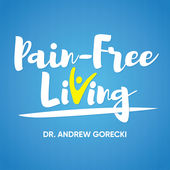
Warning: This chapter gets a bit nerdy and technical.
This is most common in people with stenosis or degenerative disc disease. Remember stenosis means narrowing and specifically it means narrowing of the hole where the nerve comes out. But remember that the hole itself is not a fixed hole, it is two half circles that move when you move. Walking is not so simple. Biomechanically when we walk we have motion from the top down and bottom up that occurs and drives motion through the cross roads of the body called the lower back.
Remember when we talked about how the nerve in the lower back comes out of a hole and travels down each leg creating the sciatic nerve. Remember when we talked about the three ways to compress or close the hole in the lower back. In case you forgot, The three ways to close the hole are backwards bending, opposite side rotation, same side side-bending. So let’s talk about walking
Motion occurs during walking because of The top down motion from your arms swinging and bottom up from your legs moving. All of which drives motion into the lower back.
Image a right step forward- Your arms naturally will rotate right creating trunk rotation to the right which opens up the right side hole (that’s good). When the right foot hits the ground the hips tile or side bend to the left. Since our eyes like to stay level our upper body leans to the right or right side bends, which closes the right hole in the lower back (that’s bad). Finally, as you take a right step forward your pelvis tilts forward and since the spine is attached to your pelvis is makes your lower back arch into what is called lordosis or backward bending. Well arching backwards is another way to compress the hole on both sides (that’s bad). So you have to motions that are causing compression on the right or hole closing which are (right side bending and bending backwards) And you have one motion that is opening the hole up (rotation to the right) because of the arm swing. This is a beautiful design, If the body is able to move properly to allow these motions to occur.
Now let’s switch to the left side of the lower back during that right step forward during walking. As you take a step forward with your right foot and your arms rotate to the right it creates right rotation in the low back. This compresses the left side of the spine and makes the hole smaller. The pelvis also tilts to the left and since your upper body stays level by bending to the right slightly, the left side hole opens up, and finally as you take a step forward your pelvis tilts forward again causing backward bending in your lower back and closing the hole. So again two ways that the hole is getting closed down but one way it is getting opened up. The opening up in this case is due to the side bending that occurs. If the hips allow the pelvis to tilt we will have a nice wide open hole. If they don’t the hole will be small and the nerve will be compressed.
The point here is that the body has a specific design and during walking our lower back counts on these other parts to move optimally. If we have to much of one motion or not enough of another motion in the surrounding areas that include the hips and upper back and feet we are not able to use this amazing design during walking. As spine segments move to their limits of design they start to get wore out and damaged. This is why walking is so commonly a problem. If you want to learn more about how the lower back moves and some strategies on how to create a spine that is able to open up the holes optimally you should click here.



